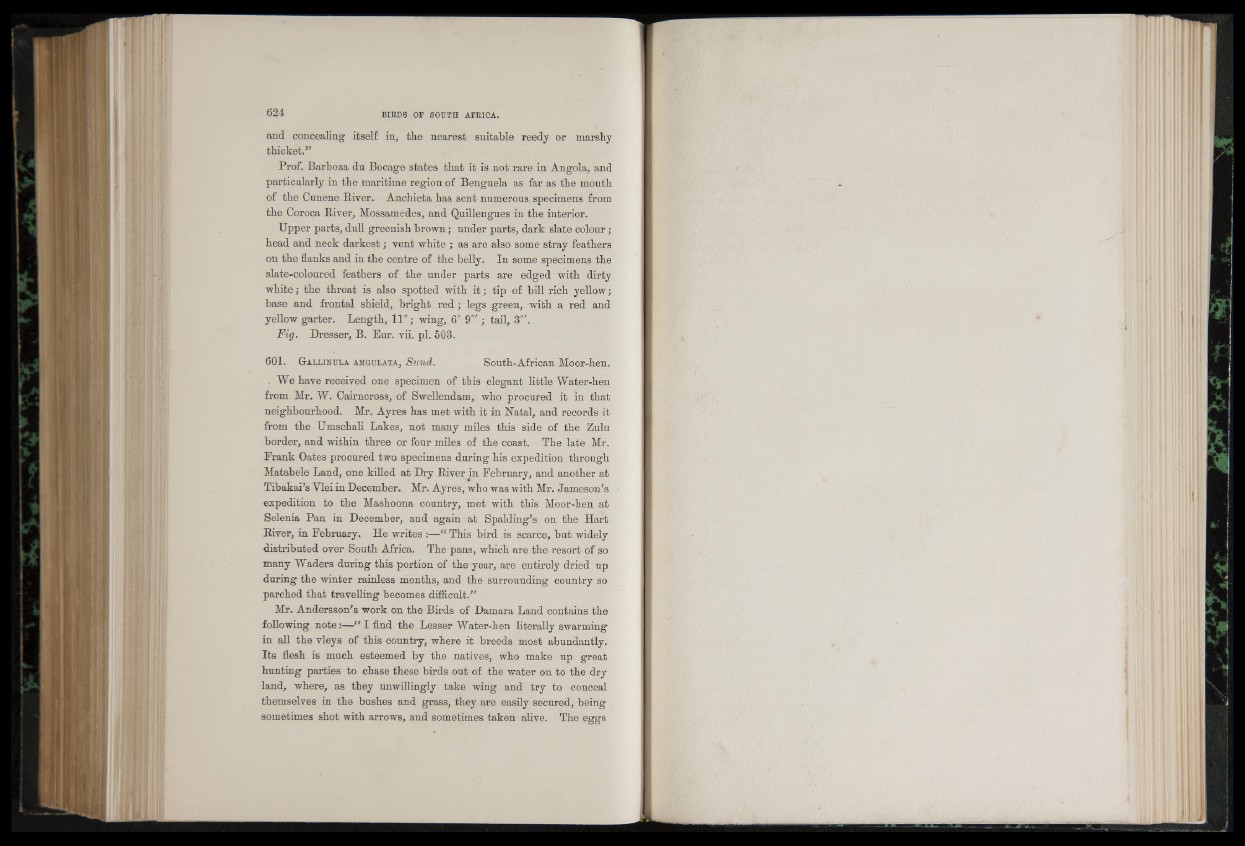
and concealing itself in, the nearest suitable reedy or marshy
thicket.”
Prof. Barboza du Bocage states that it is not rare in Angola, and
particularly in the maritime region of Benguela as far as the mouth
of the Cunene River. Anchieta has sent numerous specimens from
the Coroca River, Mossamedes, and Quillengues in the interior.
Upper parts, dull greenish brown; under parts, dark slate colour;
head and neck darkest; vent white ; as are also some stray feathers
on the flanks and in the centre of the belly. In some specimens the
slate-coloured feathers of the under parts are edged with dirty
white; the throat is also spotted with i t ; tip of bill rich yellow j
base and frontal shield, bright red ; legs green, with a red and
yellow garter. Length, 11"; wing, 6" 9"'; tail, 3'".
Fig. Dresser, B. Bur. vii. pi. 503.
601. G allinula angulata, Sund. South-African Moor-hen.
We have received one specimen of this elegant little Water-hen
from Mr. W. Cairncross, of Swellendam, who procured it in that
neighbourhood. Mr. Ayres has met with it in Natal, and records it
from the Umschali Lakes, not many miles this side of the Zulu
border, and within three or four miles of the coast. The late Mr.
Frank Oates procured two specimens during his expedition through
Matabele Land, one killed at Dry River in February, and another at
Tibakai’s Ylei in December. Mr. Ayres, who was with Mr. Jameson’s
expedition to the Mashoona country, met with this Moor-hen at
Selenia Pan in December, and again at Spalding’s on the Hart
River, in February. He writes :—“ This bird is scarce, but widely
distributed over South Africa. The pans, which are the resort of so
many Waders during this portion of the year, are entirely dried up
during the winter rainless months, and the surrounding country so
parched that travelling becomes difficult.”
Mr. Andersson’s work on the Birds of Damara Land contains the
following note:—“ I find the Lesser Water-hen literally swarming
in all the vleys of this country, where it breeds most abundantly.
Its flesh is much esteemed by the natives, who make up great
hunting parties to chase these birds out of the water on to the dry
land, where, as they unwillingly take wing and try to conceal
themselves in the bushes and grass, they are easily secured, being
sometimes shot with arrows, and sometimes taken alive. The eggs